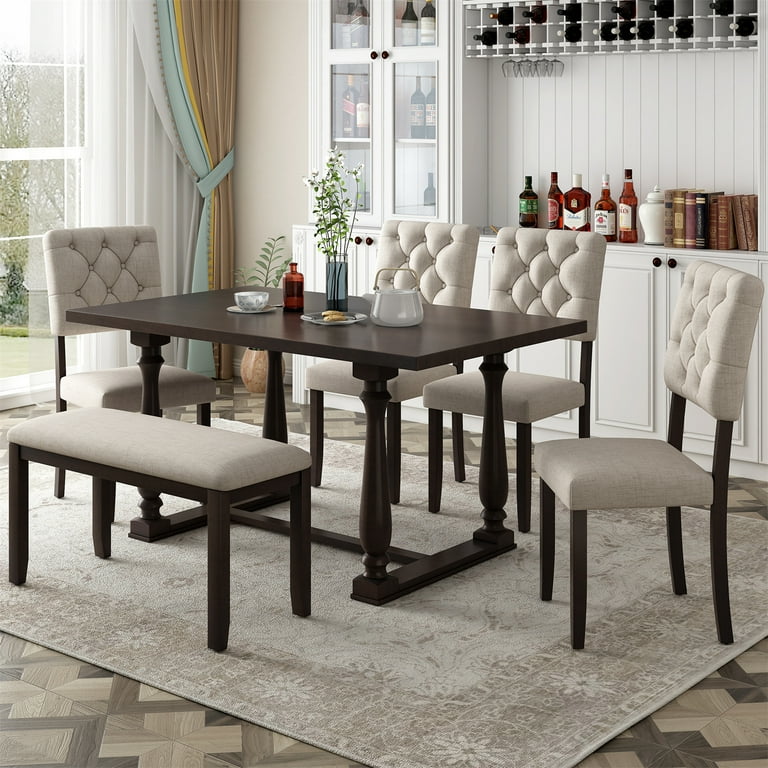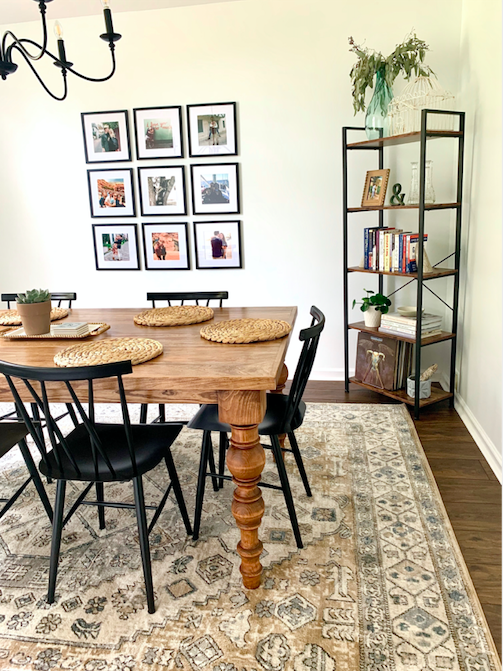Professional Tips for Setting Up Eating Area Table Legs for Optimum Stability
When it concerns installing eating space table legs, achieving maximum security is vital for both performance and aesthetic appeals. The process starts with picking the right products and hardware, followed by thorough positioning and consideration of weight circulation. Each step plays a vital role in making certain that the completed item stands up to everyday usage without compromising safety and security or style honesty. Recognizing the nuances of these elements can substantially influence the overall result. What specific methods can enhance stability also further?
Pick the Right Legs
When selecting the suitable legs for your eating area table, it is vital to take into consideration both functionality and looks. The legs you select will substantially influence the overall design and stability of the table. Initially, review the table's planned usage; if you anticipate frequent gatherings, sturdier legs, such as those made from solid wood or metal, may be better, as they supply increased sturdiness and assistance.
Typical eating tables usually range from 28 to 30 inches in elevation, so make certain the legs line up with this standard for convenience. Tapered legs can add a modern touch, while turned legs could communicate a more timeless aesthetic.

Select Appropriate Equipment
How can the ideal equipment enhance the stability and long life of your dining room table? The choice of appropriate hardware is important to guaranteeing that the legs of your table are safely affixed and able to withstand routine usage. High-quality screws, bolts, and brackets give the necessary strength to support the weight of the table, in addition to any added lots placed upon it during meals or events.
When picking screws, choose those made from durable materials such as stainless steel or brass, which withstand rust and preserve stability with time. The size of the screws is just as vital; they should penetrate deeply right into the table's framework without compromising stability. For bolted links, consider utilizing lock washers to protect against loosening up as a result of vibration or movement.
In addition, utilizing corner brackets can add additional support, especially for bigger tables or those with much heavier tops. These brackets disperse weight uniformly and help keep the table's form. Guaranteeing that the hardware you pick is proper for the particular products of your table will certainly further boost its general stability and long life, allowing you to appreciate your dining experience for several years to find.
Ensure Proper Placement
Appropriate alignment of dining-room table legs is crucial for both aesthetic allure and practical security. Misaligned legs can result in an irregular tabletop, which might not only be aesthetically unappealing however additionally jeopardize the table's use. To achieve optimum alignment, start by measuring the distance from the table's edges to the leg add-on points. This ensures that each leg is positioned equidistant from the sides, creating a well balanced look.
Utilize a level during setup to confirm that each leg is perpendicular to the tabletop. It is a good idea to note the preferred leg placements on the bottom of the table with a pencil or covering up tape prior to protecting them.
In addition, ascertain the placement after the first screws are tightened up, as modifications might be necessary before fully securing the hardware. By focusing on correct placement, you not just boost the table's general layout but also guarantee that it remains stable and functional for several years to find.

Consider Weight Distribution
After ensuring correct positioning of the dining-room table legs, it is essential to think about weight distribution to boost security and functionality. dining room table legs. Correct weight distribution is essential in preventing ensuring and tottering that the table can support its desired load without threat of tipping or breaking down
When placing the legs, ensure they are positioned at equal ranges from the center of the table to equally distribute the weight throughout the structure. Take into consideration the weight of the tabletop and any kind of items that will often rest on it, such as tabletop appliances or attractive pieces. Tables with much heavier see this here surface areas ought to ideally have legs located closer to the corners, as this makes best use of the base of support and reduces go to the website the threat of instability.
Furthermore, if the table is meant for usage in a high-traffic location, think about making use of much heavier products for the legs or including supporting aspects, such as cross-bracing or a reduced shelf - dining room table legs. These modifications can aid maintain balance and protect against shifting during usage. Inevitably, a well-considered weight distribution technique will dramatically enhance the table's general efficiency, guaranteeing it continues to be a functional and appealing centerpiece for your eating space
Test Stability Before Use
Checking the stability of the eating area table prior to usage is a critical action that needs to not be forgotten. If the table reveals instability, determine the legs or joints that may require change.
Following, inspect that all fasteners and screws are tightened up effectively. Loosened connections can lead to instability and possible damages in time. If necessary, make use of timber glue on joints to enhance security, making sure to allow adequate drying out time.

Conclusion
Finally, the installment of dining area table legs requires cautious factor to consider of materials, placement, hardware, and weight distribution to accomplish optimum stability. By choosing top additional reading quality fasteners and strong legs, ensuring accurate positioning, and dispersing weight evenly, the structural integrity of the table can be substantially boosted. Conducting a stability examination before regular use additionally makes certain that the table will certainly withstand daily pressures, consequently giving a reliable and safe eating experience.
When it comes to mounting eating space table legs, attaining optimum security is vital for both capability and aesthetics. The legs you choose will considerably impact the overall design and stability of the table (dining room table legs). Basic dining tables generally range from 28 to 30 inches in height, so ensure the legs straighten with this criterion for convenience.Appropriate positioning of dining room table legs is essential for both visual allure and practical stability.In conclusion, the installation of eating space table legs requires mindful factor to consider of products, hardware, weight, and positioning distribution to attain maximum stability
Comments on “Affordable and High-Quality Dining Room Table Legs for Every Budget”